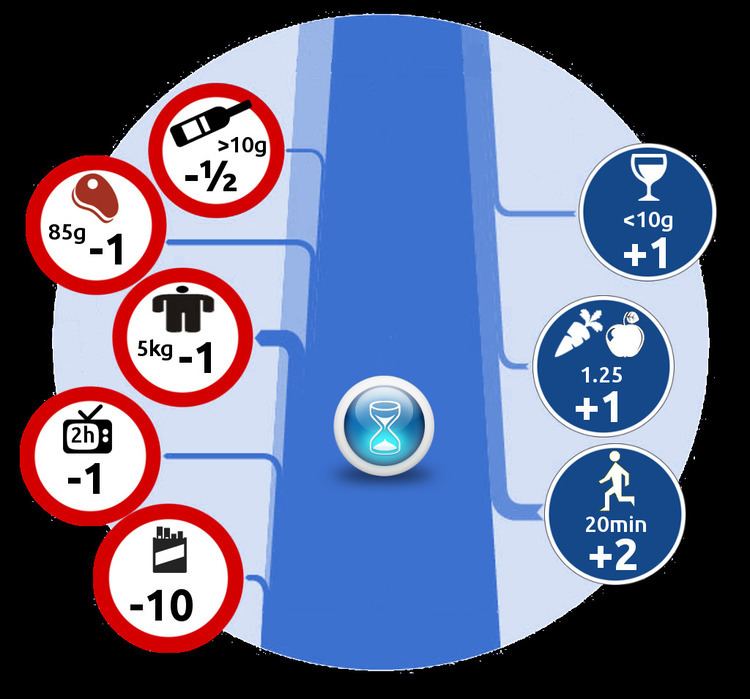 | ||
A microlife is a unit of risk representing half an hour change of life expectancy.
Introduced by David Spiegelhalter and Alejandro Leiva, microlives are intended as a simple way of communicating the impact of a lifestyle or environmental risk factor, based on the associated daily proportional effect on expected length of life. Similar to the micromort (one in a million probability of death) the microlife is intended for "rough but fair comparisons between the sizes of chronic risks". This is to avoid the biasing effects of describing risks in relative hazard ratios, converting them into somewhat tangible units. Similarly they bring long-term future risks into the here-and-now as a gain or loss of time.
"A daily loss or gain of 30 minutes can be termed a microlife, because 1 000 000 half hours (57 years) roughly corresponds to a lifetime of adult exposure."The microlife exploits that for small hazard ratios the change in life expectancy is roughly linear. They are by necessity rough estimates, based on averages over population and lifetime. Effects of individual variability, short-term or changing habits, and causal factors are not taken into account.
